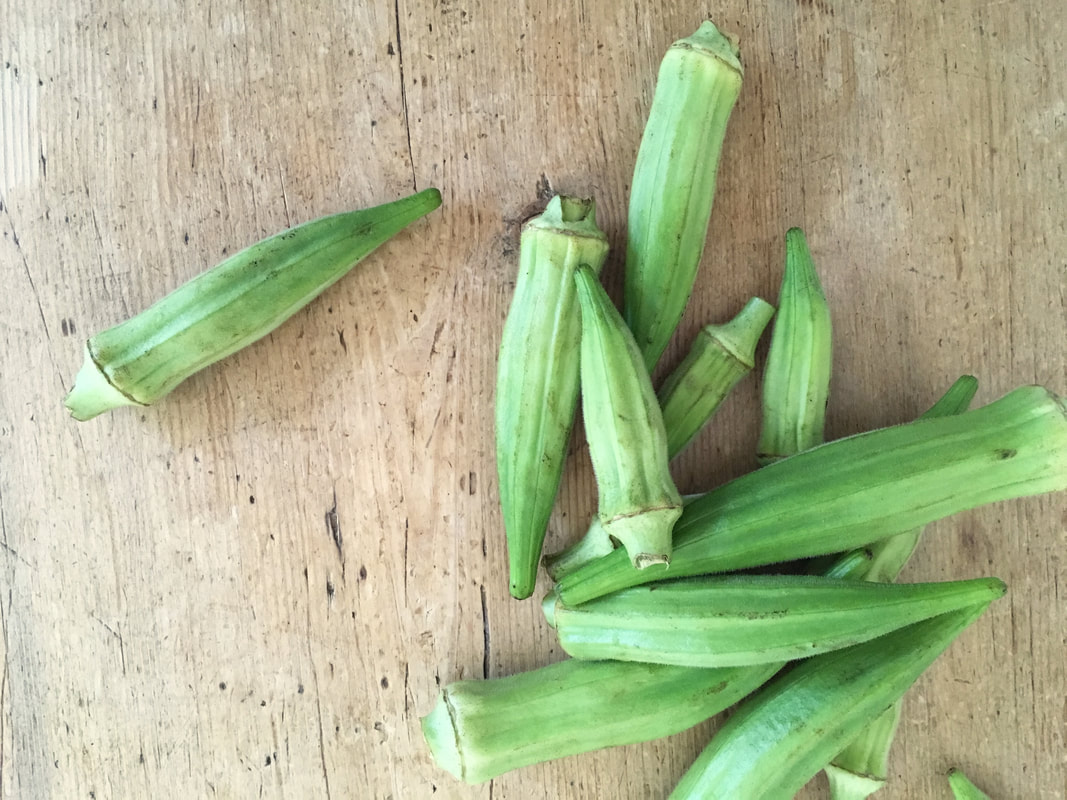

In Curaçao the soup is known as ''jambo'' which primarily is made out of the okra's mucilage. In the Caribbean islands, okra is eaten in soup. In Malaysia okra is commonly a part of ''yong tau foo'' cuisine, typically stuffed with processed fish paste and boiled with a selection of vegetables and tofu, and served in a soup with noodles. In curries, okra is used whole, trimmed only of excess stalk and keeping the hard conical top, which is discarded at the time of eating. It is also simmered in coconut based curries or tossed with ground mustard seeds. It is popular in Indian and Pakistani cuisine, where chopped pieces are stir-fried with spices, pickled, salted or added to gravy-based preparations such as ''bhindi ghosht'' and ''sambar''. In India, the harvesting is done at a later stage, when the pods and seeds are larger. West Asian cuisine usually uses young okra pods, usually cooked whole. In most of West Asia, okra is known as ''bamia'' or ''bamya''. In Syria, Tunisia, Egypt, Albania, Greece, Bulgaria, Iran, Iraq, Jordan, Lebanon, Turkey, and Yemen, and other parts of the eastern Mediterranean, including Cyprus and Israel, okra is widely used in a thick stew made with vegetables and meat. The cooked leaves can also be used as a powerful soup thickener. Alternatively, the pods can be sliced thinly and cooked for a long time so the mucilage dissolves, as in gumbo. Cooking with acidic ingredients such as a few drops of lemon juice, tomatoes, or vinegar may help. Some people cook okra this way, others prefer to minimize sliminess keeping the pods intact, and brief cooking, for example stir-frying, help to achieve this. The products of the plant are mucilaginous, resulting in the characteristic "goo" or slime when the seed pods are cooked the mucilage contains a usable form of soluble fiber. It was commonplace throughout the Southern United States by 1800, and the first mention of different cultivars was in 1806. Thomas Jefferson noted it was well established in Virginia by 1781. It was being grown as far north as Philadelphia by 1748.

Okra may have been introduced to southeastern North America in the early 18th century. This ensures a balanced diet but also reduces the need for storage in an area where post-harvest losses are high. In compound farms in the rainforest of southeastern Nigeria, farmers have developed a multi-crop system that provides a diversified and continuous production of food, combining species with different maturity periods such as yams, cassava, cocoyams, bananas, plantain, maize, okra, pumpkin, melon, leafy vegetables and a variety of trees and shrubs, 60 of which provide food products. It was further documented in Suriname in 1686. The plant was introduced to the Americas by ships plying the Atlantic slave trade by 1658, when its presence was recorded in Brazil. One of the earliest accounts is by a Spanish Moor who visited Egypt in 1216, who described the plant under cultivation by the locals who ate the tender, young pods with meal.įrom Arabia, the plant spread around the shores of the Mediterranean Sea and eastward. The plant may have entered southwest Asia across the Red Sea or the Bab-el-Mandeb strait to the Arabian Peninsula, rather than north across the Sahara, or from India. The Egyptians and Moors of the 12th and 13th centuries used the Arabic word for the plant, ''bamay'', suggesting it had come from the east. Supporters of a West African origin point to the greater diversity of okra in that region however, confusion between okra and ''A. Supporters of a South Asian origin point to the presence of its proposed parents in that region. The geographical origin of okra is disputed, with supporters of South Asian, Ethiopian and West African origins. Truly wild, as opposed to naturalised, populations, are not definitely known, and the species may be a cultigen. Okra is an allopolyploid of uncertain parentage.


 0 kommentar(er)
0 kommentar(er)
